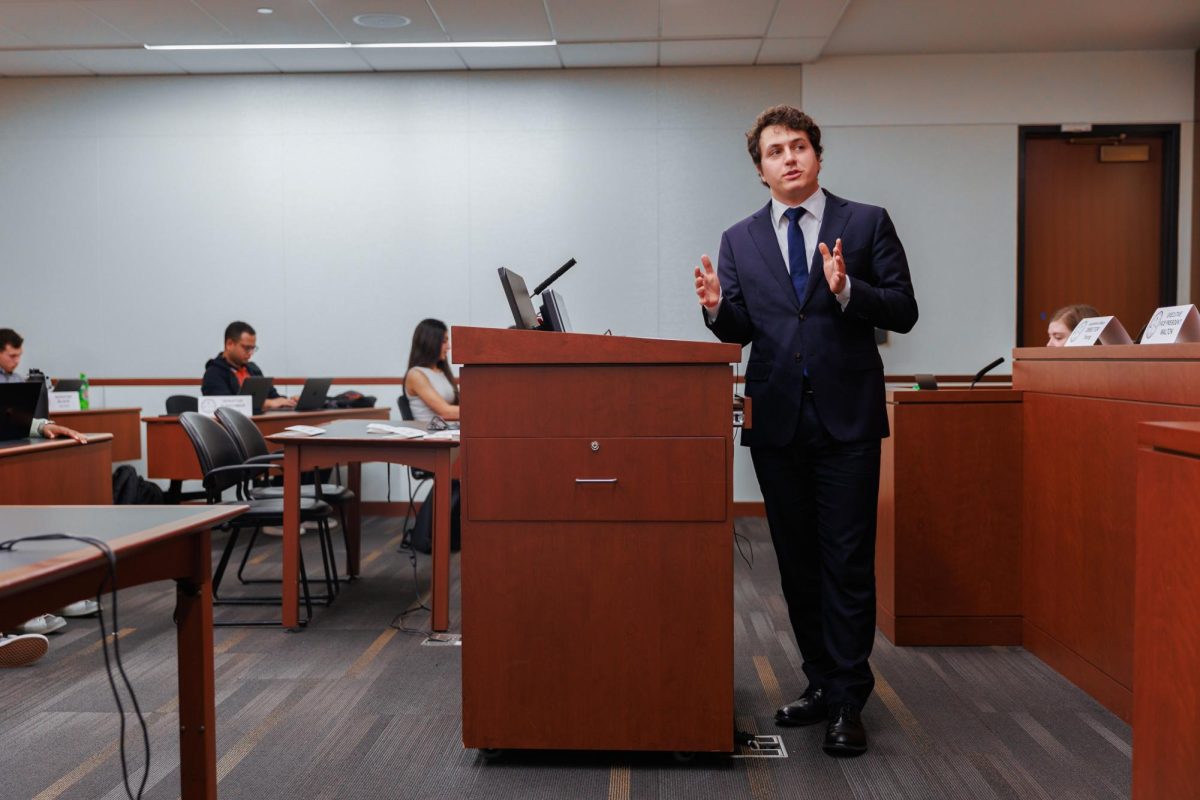After a homeless encampment along the Whitehurst Freeway blocks from campus was dispersed last Tuesday, neighbors said they will continue to help assist the homeless in Foggy Bottom.
D.C. sanitation workers dissolved the camp just north of the Kennedy Center because of cleanliness and waste concerns, a city spokeswoman said. A day after the removal, a new camp developed in the same location – next to and under the freeway – continuing a pattern of homeless people settling in the area.
Susana Castillo, the deputy press secretary in Mayor Muriel Bowser’s office, said in an email that the Department of Behavioral Health and the Department of Human Services will continue to present the camp’s and the city’s homeless with services to help them find housing.
“Our plan has been and continues to be to work with people living there – on an individual basis – to connect them with the resources they need to move into a safe place, and out of the elements,” she said.
Castillo added that DHS has communicated with people living around the Whitehurst Freeway for the past 10 years and attempted to provide housing for them. Over the past several months, six people from the camp have received housing, she said.
In 2015, city officials told residents of the encampment they would have to leave, which distressed one man and led to his hospitalization, DCist reported. Tents appeared at the location again a year later, according to NBC Washington.
By last Friday, fences surrounding the Whitehurst Freeway encampment were installed, and private contractors were stationed along the closed streets in the area. “No trespassing” signs were placed along the fence line, where only contracted professionals could enter.
One tent sits on top of a grassy hill without a fence on one side of the freeway, while the other side of the freeway once had up to 14 people living in a collection of tents huddled together, according to an email from Emily Buzzell, the director of outreach for Miriam’s Kitchen, sent to Marina Streznewski, the president of the Foggy Bottom Association.
Leaders in neighborhood groups like the FBA and the Foggy Bottom and West End Advisory Neighborhood Commission said they will continue to push for services, like housing offers, through their work with Mayor Muriel Bowser and other programs that support the homeless.
Streznewski said city officials that break up encampments offer housing and services to those who live there, and more people have accepted these offers recently.
This encampment was one of many that have been dissolved in the same location over the past two years, Streznewski said.
“It got to a point where something needed to be done,” she said. ”Whether demolishing the encampment was the right thing is open for debate.”
Streznewski said FBA members discussed having residents testify at a D.C. Council hearing for more funding for permanent housing at a Homelessness Task Force meeting last week, but that residents didn’t seem interested in the idea.
“If people who’ve been in the community could continue to talk and continue to meet and try to find out, try to figure out solutions, we could work on little tiny things like providing a one-day program for people who are experiencing homelessness,” she said.
Ward 2, which includes Foggy Bottom, has the most unsheltered homeless population in the city, DCist reported last week.
Many have not taken the services and housing that have been offered, possibly because they are concerned about safety after 8-year-old Relisha Rudd disappeared from the D.C. General shelter in 2014, Eve Zhurbinskiy, an ANC commissioner, said.
“Some people are just refusing housing and are just continuing to live there,” she said. “That’s been a very huge issue.”
Zhurbinskiy said the FBA has discussed increasing public awareness for the neighborhood, so people would know who to contact to connect a homeless person with available resources.
She added that the FBA Homelessness Task Force may look into proposing to the mayor that there be a census of unsheltered homeless people in the summer in addition to the annual Point in Time Census in January because more people will be outside in the summer, she said.
Zhurbinskiy said after the dispersal, approximately 20 tons of waste was removed from the site.
“I think it’s a really complicated issue,” she said. “You want to balance kind of the human rights of the people who are living there with the fact that this is presenting a hazard first and foremost to the people who are living in the encampment.”




